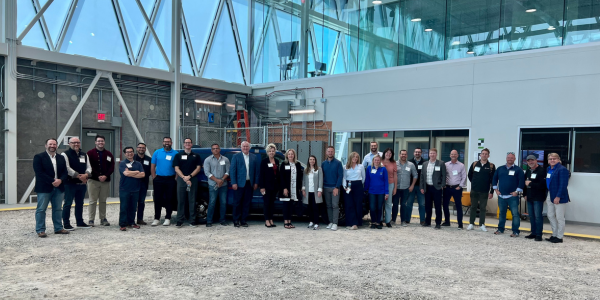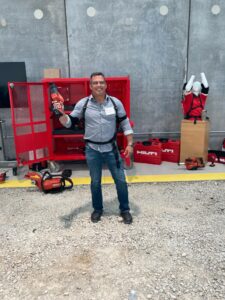RT3 members explore technology in one of the most innovative labs in the world.
The Roofing Technology Think Tank (RT3) is committed to learning about new, emerging technologies and how these technologies may be leveraged in the roofing industry. They meet several times a year to experience the latest innovations and understand how they might advance the roofing industry as a whole.
On May 16 RT3 members met at the Oracle Innovation Lab in Deerfield, Illinois to participate in immersive experiences at the lab. According to an information sheet provided by Oracle, “The Oracle Industry Lab is a unique idea incubator designed to help businesses in a variety of industries tackle their most complex challenges. At locations around the world, we work side by side with our customers and technology partners in hands-on simulated industry settings to turn bold ideas into powerful solutions they can implement and use today.”

Manufacturing and AI
One of the experiences was a manufacturing and transportation focus, where artificial intelligence was being used for quality control in a manufacturing environment. Strategically positioned cameras would monitor the production of materials and issue an alert if abnormalities were spotted in the item being made. Drones were deployed to fly autonomous missions to count inventory. In the use case in the lab, the drone would fly to a stack of pipes, take a photo and count the number of pipes, delivering the count to inventory software in the lab.
Models demonstrated how fleets of trucks could be outfitted with technology to monitor their performance, efficiency, locations and health. The technology can alert the company to potential delays or problems before they happen, allowing them to take action.

Connected Tools
Oracle partner Hilti was on site to demonstrate their line of connected tools. They have eliminated the need for electric cords by using smart batteries to power the tools. The tools are able to be monitored using an app on a smartphone that provides detailed information about the use of the tool and the GPS capabilities of the battery can provide the tool’s exact location. This feature was extremely helpful lto one contractor whose tools were stolen from their truck. The app was able to provide information on their whereabouts and the contractor was able to recover the stolen items.
Hilti also has an exoskeleton that helps support the upper body when doing repetitive work overhead. Members were able to try on the exoskeleton and experience the difference. The company has another exoskeleton in the works that will provide support for the knees, hips and lower body.

Virtual Reality and Wearables
VR headsets were donned by members as they experienced how a digital model of the Innovation Lab was used to identify a potential issue and correct it during the design phase – before construction was even started.
New Oracle partner RealWear had a hardhat equipped with a smart eye that allowed the person wearing the hat to use voice commands to take photos and share data about the condition of a roof or a job site. By freeing up both hands and eliminating the need to enter data into a smartphone or tablet, the user is safer on the job and more efficient.
Smart Suite
The energy and utilities section of the lab featured a model of a smart kitchen and living area that helps consumers understand their energy usage and ways that they might be more sustainable and energy smart. A Tesla battery wall stores electricity generated by the solar panels on the roof of the lab and holds enough electricity to power the lab for four hours should they experience a power outage.
Smart Scheduling
The command center at the lab has state-of the-art monitors and technology where the Primavera P6 scheduling software was demonstrated. Integrations with Esri and other data sources allow for the identification of potential issues that could arise during a project. The example was for the installation of a utility line, where upon examining the data, we were able to determine that there was farm that would experience disruption as well as a creek that would need navigated during the installation. This allowed for adjustment of the schedule with a more accurate timeline to allow for those issues to be addressed.
After the immersive experiences, members gathered to discuss what was learned throughout the morning and how it might translate into roofing. They also identified challenges that the industry may face in adopting some of these concepts and plan to work on providing information and education to help the industry integrate tech solutions more efficiently.
If you’d like to learn more about becoming a member or participating in future meetups, visit rt3thinktank.com and choose Join RT3.

